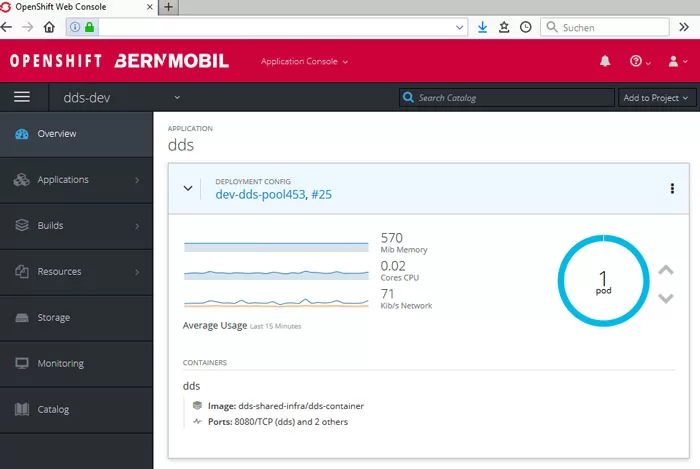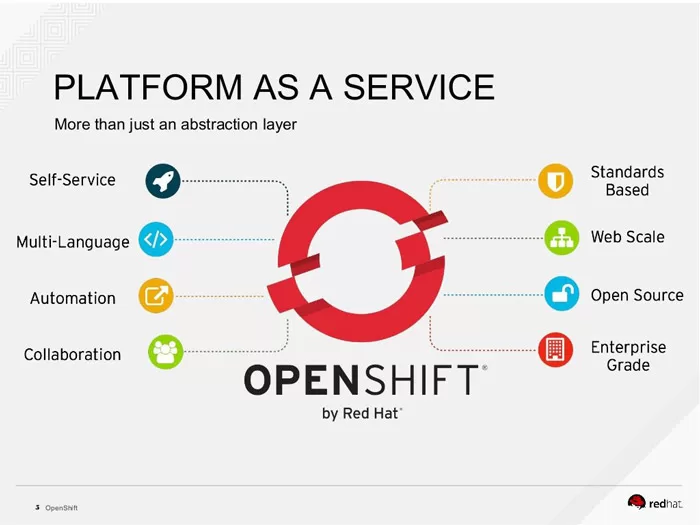As organizations continue to embrace cloud-native technologies and containerization, the need for efficient and flexible infrastructure solutions has become paramount. Red Hat Openshift virtualization is a cutting-edge solution that combines the power of virtualization with the agility of containerization. In this article, we will explore what Red Hat Openshift virtualization is, how it works, its benefits, and the possibilities it offers for disaster recovery.
What is Red Hat Openshift virtualization?
Red Hat Openshift virtualization is an extension of the popular Red Hat OpenShift Container Platform that enables organizations to run virtual machines alongside holders on the same platform. It seamlessly integrates the best of both worlds, allowing developers to influence the benefits of holders while still supporting traditional virtual machine workloads. Openshift virtualization provides a unified platform for managing and orchestrating both holders and virtual machines, simplifying overall infrastructure management.
Some key things to know about it:
- It allows you to run virtual machines alongside holders in OpenShift clusters, providing a single platform for managing both.
- It is built on top of KubeVirt, an open-source Kubernetes project for running VMs. Red Hat contributes heavily to KubeVirt.
- It integrates virtualization deeply into OpenShift, allowing VMs to be managed through native OpenShift concepts like capsules and services.
- It supports running many types of virtual machines including Red Hat Enterprise Linux, Windows, and various cloud images.
- The virtual machines run using Kubernetes resources like capsules, persistent volumes, storage classes, etc. This allows features like auto-scaling and self-mending.
- It provides mechanisms for networking and storage integration to connect VMs with holders and Kubernetes services.
clslearn offers you the best courses in the course of RedHat Linux Administration I
How does virtualization work with Red Hat OpenShift?

Openshift virtualization influences the powerful open-source virtualization technology, KubeVirt, to enable running virtual machines as Kubernetes custom resources. This integration allows virtual machines to be managed and orchestrated using the same familiar tools and processes used for holders. By leveraging Kubernetes as the underlying orchestration engine, Openshift virtualization provides a consistent and scalable platform for managing both holders and virtual machines.
Openshift virtualization is built using KubeVirt – an open-source virtual machine management add-on for Kubernetes.
It allows you to run virtual machines (VMs) side-by-side with holders in OpenShift clusters. The VMs are managed as Kubernetes custom resources.
The virtual machines themselves run as capsules, using a specialized container runtime called virt-launcher. This launches the QEMU/KVM hypervisor to produce the VM.
Storage for the VM disks is provisioned using Kubernetes PersistentVolumes. These can utilize any storage class, such as NFS, iSCSI, etc.
Networking for the VMs influences the standard Kubernetes CNI networking model. VMs get their IP addresses and can be exposed as services just like holders.
Policies and limits can be applied to VMs similar to holders using Kubernetes namespaces, quotas, security contexts, etc.
The OpenShift console provides management of VMs in the same workflow as holders. You can deploy, monitor, and auto-scale VMs through Kubernetes native APIs.
OpenShift’s Operator capabilities can be influenced to automate and simplify virtualization tasks. For example, creating a VM image catalog.
Benefits of Red Hat Openshift Virtualization

Resource Optimization: Openshift virtualization enables efficient utilization of infrastructure resources by allowing holders and virtual machines to coexist on the same platform. It eliminates the need for separate infrastructure for virtual machines, leading to cost savings and improved resource utilization.
Agility and Scalability: With Openshift virtualization, organizations can rapidly deploy and scale both holders and virtual machines as per their needs. It provides a single control plane for managing the entire infrastructure, simplifying the management and scaling processes.
Application Portability: Openshift virtualization provides a consistent platform for running both holders and virtual machines. This allows organizations to easily migrate existing virtualized workloads to holders or vice versa, providing greater flexibility and portability.
Enhanced Security and Isolation: By leveraging the container security features of OpenShift, Openshift virtualization provides enhanced security and isolation for virtual machines. Each virtual machine runs inside a dedicated pod, benefiting from the same security mechanisms and policies applied to holders.
Unified management – VMs and holders can be managed side-by-side using Kubernetes APIs and OpenShift tools. No need to learn multiple platforms.
Flexibility – OpenShift can run VMs based on major hypervisor platforms like KVM, Hyper-V, and vSphere. You’re not locked into any one virtualization platform.
Agile operations – Quickly roll out, update, and scale VMs using DevOps and infrastructure-as-code techniques from Kubernetes.
Efficiency – Increased resource utilization by running VMs and holders together on the same infrastructure.
Automation – Complex VM administration tasks can be automated using Kubernetes operators and Ansible.
Hybrid cloud capable – Consistent environment for running workloads on-premises and public clouds.
Cost savings – Reduce licensing costs by consolidating multiple virtualization platforms into OpenShift.
Modern apps – Ability to deploy traditional VM-based apps alongside new cloud-native containerized apps for a complete solution.
get to know about: IS THE CCNP SERVICE PROVIDER WORTH IT?
What you can do with Openshift virtualization
Run Legacy Applications: Openshift virtualization allows organizations to run legacy applications that require a traditional virtual machine environment alongside modern containerized applications. This enables a smooth transition to container-based architectures without disrupting existing workloads.
With Openshift virtualization, you can do the following:
- Produce and manage Linux and Windows virtual machines.
- Deploy and manage containerized workloads on VMs.
- Share resources between VMs and containerized workloads.
- Produce disaster recovery plans for your VMs.
- Use the same Kubernetes tools and workflows to manage both your VMs and your containerized workloads.
Hybrid Cloud Deployments: With Openshift virtualization, organizations can deploy and manage virtual machines across different cloud environments like Aws openshift or Azure openshift. This flexibility enables seamless hybrid cloud deployments, ensuring workload portability and easy integration with existing infrastructure.
Disaster Recovery for Red Hat Openshift Virtualization
Openshift virtualization provides robust disaster recovery capabilities for virtual machines. By leveraging features like live migration and replication, organizations can ensure high availability and data protection for their virtual machine workloads. In the event of a failure, virtual machines can be quickly migrated to healthy nodes, minimizing downtime and ensuring business continuity.
Openshift virtualization can be used to produce disaster recovery plans for your VMs. This can be done by creating a replica of your VMs in a different location. If your primary VMs fail, you can then failover to the replicas.
To produce a disaster recovery plan for your VMs using Openshift virtualization, you will need to do the following:
Produce a replica of your VMs in a different location.
Configure the replicas to be ready for failover.
Test your disaster recovery plan to make sure it works.
By following these steps, you can produce a disaster recovery plan for your VMs that will help to protect your business-critical applications.
Aws openshift and Azure openshift

Both AWS and Azure offer managed OpenShift services, which provide a fully managed platform for running OpenShift clusters in the cloud. Here’s a brief overview of each:
Aws openshift: AWS offers a service called Amazon EKS (Elastic Kubernetes Service) for running Kubernetes clusters in the AWS cloud. OpenShift can be deployed on top of EKS to provide a managed OpenShift experience. With Aws openshift, you can influence the scalability, reliability, and security features of AWS while benefiting from the additional capabilities provided by OpenShift, such as developer tools, container orchestration, and application lifecycle management.
Azure openshift: Azure provides a service called Azure Red Hat OpenShift (ARO), which is a fully managed OpenShift offering jointly developed by Microsoft and Red Hat. Azure openshift enables you to deploy and manage OpenShift clusters on Azure infrastructure. It allows you to take advantage of Azure’s global footprint, scalability, and integration with other Azure services. With ARO, you can focus on building and deploying applications without worrying about the underlying infrastructure.
Both Aws openshift and Azure openshift aim to simplify the management and operation of OpenShift clusters, allowing you to focus more on developing and deploying applications rather than managing the infrastructure. The choice between Aws openshift and Azure openshift depends on your specific requirements, existing cloud ecosystem, and familiarity with the respective platforms.
Conclusion
Red Hat Openshift virtualization combines the benefits of virtualization and containerization, providing organizations with a powerful and flexible platform for running both holders and virtual machines. It offers numerous advantages, including resource optimization, agility, application portability, and enhanced security. With Openshift virtualization, organizations can embrace hybrid cloud deployments and implement robust disaster recovery solutions. By integrating virtualization seamlessly into the OpenShift ecosystem, Red Hat has provided a comprehensive and unified platform for modern application development and infrastructure management.
























